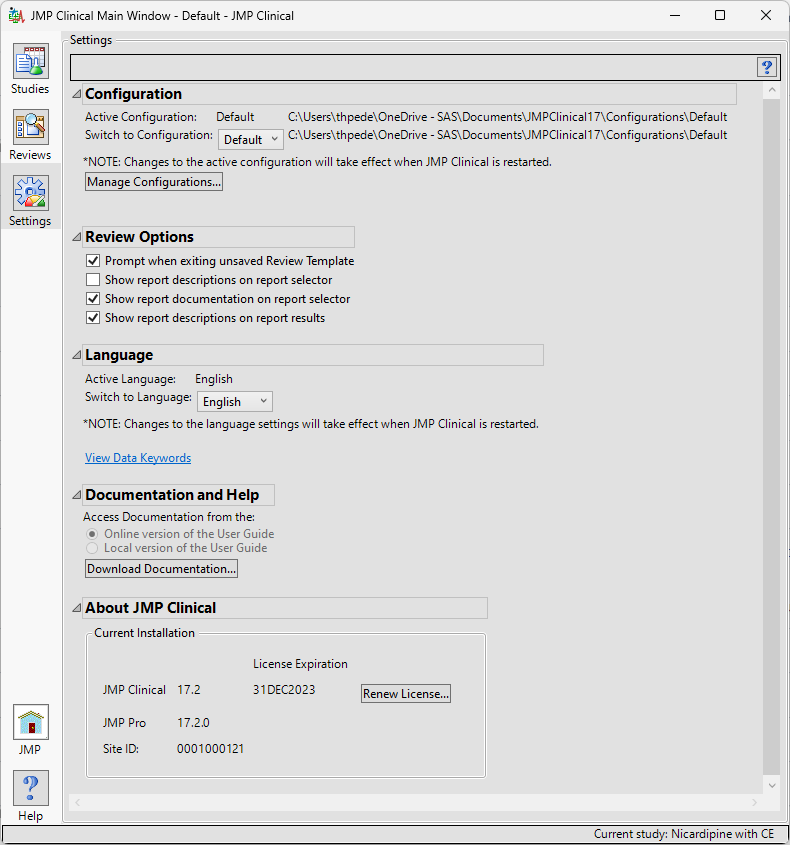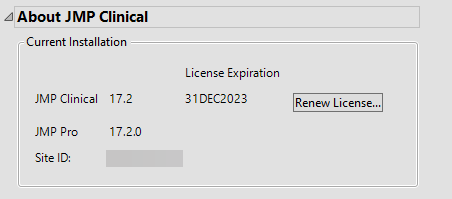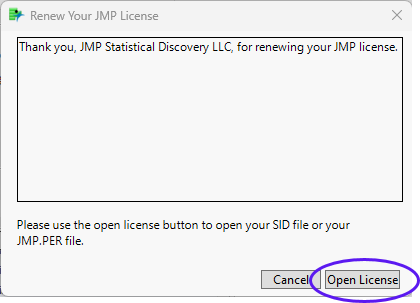Settings 
The Settings tab is used to specify general settings that apply across all JMP Clinical functions and reports.

Configuration
Use this feature to choose where to access the study information. Local specifies the default folder on your machine’s hard drive (typically C:\Program Files\SAS\JMPClinical\**\Clinical1 on a Windows machine and /Library/Application Support/JMP/17/Clinical on a MAC). Other options (such as “Shared) indicates a location on a network drive that has been set up for use by multiple users.
Use the Switch to Configuration drop-down menu to select an alternate configuration. You must the click and then reopen JMP Clinical to effect the change.
Adding a New Configuration and/or Modifying an Existing Configuration
The configuration of your JMP Clinical installation can be modified to meet the specific needs of your organization. Use the to add or modify a configuration. Please note that because the files governing the default configuration are typically located in the install folder, users who do not have write privileges for this folder will be unable to modify the default configuration. An alternative option for these users is to add a new configuration in a writeable location. Refer to Manage Configurations for more information.
Users upgrading from JMP Clinical 8.x to JMP Clinical 17.x can migrate their previous configurations and studies to JMP Clinical 17.2 using the addin and instructions located at Migrating JMP Clinical Configurations and Studies from JMP Clinical 7.0 through 8.1 to JMP Clinical 17.0 through 18.0 on Windows OS.
Options you can set in a new configuration include:
File Paths
This section displays the current configuration, the paths to the user root directory, system preferences, and user documentation and other files used and created by JMP Clinical. An option for viewing the paths to all relevant directories can be selected.
Refer to File Path Options for a Configuration for more information
System Preferences
Refer to System Preferences for a Configuration for descriptions of system preferences and instructions for their customization.
Role Assignments
The following user roles can be set for individual users.
| • | Study Manager - A user with this role can do all of the operations involved in managing studies within JMP Clinical: add, combine, and refresh metadata, rename or move folders, update a review with a new snapshot, update the study risk data set, and delete studies. The code specification for this role is "StudyManager". |
| • | Study List Manager - A user with this role can manage and delete studies from shared folders. By default, this role is not assigned. The code specification for this role is "StudyListManager". |
| • | Review Author - A user with this role can create/edit/save Review Templates, do ad hoc analyses, and create and save Reviews. They can also manage the Holiday and Event data set and Risk Threshold data sets used by the configuration. A Review Author implicitly has the Reviewer role as well. The code specification for this role is "ReviewerAuthor". |
| • | Configuration Manager - A user with this role can add and define JMP Clinical configurations. This role is assigned to all users by default. The code specification for this role is "StudyManager". |
| • | Settings Editor - A user with this role has access to the Settings tab on the JMP Clinical Main Window. This enables them to select different configurations (if defined), and change how they view Documentation and Help. The code specification for this role is "SettingsEditor". |
Refer to Role Assignments for more information.
Username/Assignments
This option displays the user roles for each user of a shared JMP Clinical configuration.
Refer to Role Assignments for more information.
Note: The tabs and options available on the JMP Clinical Main Window are dependent on the roles assigned to the user. Refer to The JMP Clinical Main Window Changes Depending on the Assigned User Role. for more information.
Review Options
By default, JMP Clinical prompts you to save Unsaved Review Templates when exiting them. To block this prompt, deselect the Prompt when exiting unsaved Review Template check box.
| 8 | Check the Show report descriptions on report selector check box to show a description of the reports on the Report Selector. |
| 8 | Check the Show report documentation on report selector check box to show the report's documentation page on the Report Selector. |
| 8 | Check the Show report descriptions on report results check box to show a description of the report at the top of the report results window. |
Language
JMP Clinical supports use of either both English and Chinese languages, as well as partially supporting Japanese.
| 8 | Use the drop-down menu to change language usage by JMP Clinical. |
Language options include English, Japanese, and Chinese.
| 8 | You must exit and relaunch JMP Clinical in order for the language change to take effect. |
Documentation and Help
By default, JMP Clinical accesses the JMP Clinical User Guide, an online documentation, and Help system. You can also download the documentation to your local drive and specify which version (local or online) of the JMP Clinical User Guide to access.
| 8 | Click to download and install the JMP Clinical User Guide to your local machine. |
The download process can take several minutes. A window opens, showing the progress of the download.
The option for selecting either the online or local versions of the documentation become active once the download has completed.
About JMP Clinical
This section provides version numbers for the different components of your JMP Clinical installation and the expiration dates of your license file. An option for renewing your license isincluded.

To renew your JMP Clinical license:
| 8 | Click to open the Renew Your JMP License window |

| 8 | Click to open a Finder window. |
| 8 | Navigate to your new license file. |
| 8 | Select the file and click to renew your license. |
Note: You must quit and reopen JMP before any changes made on this tab take effect.